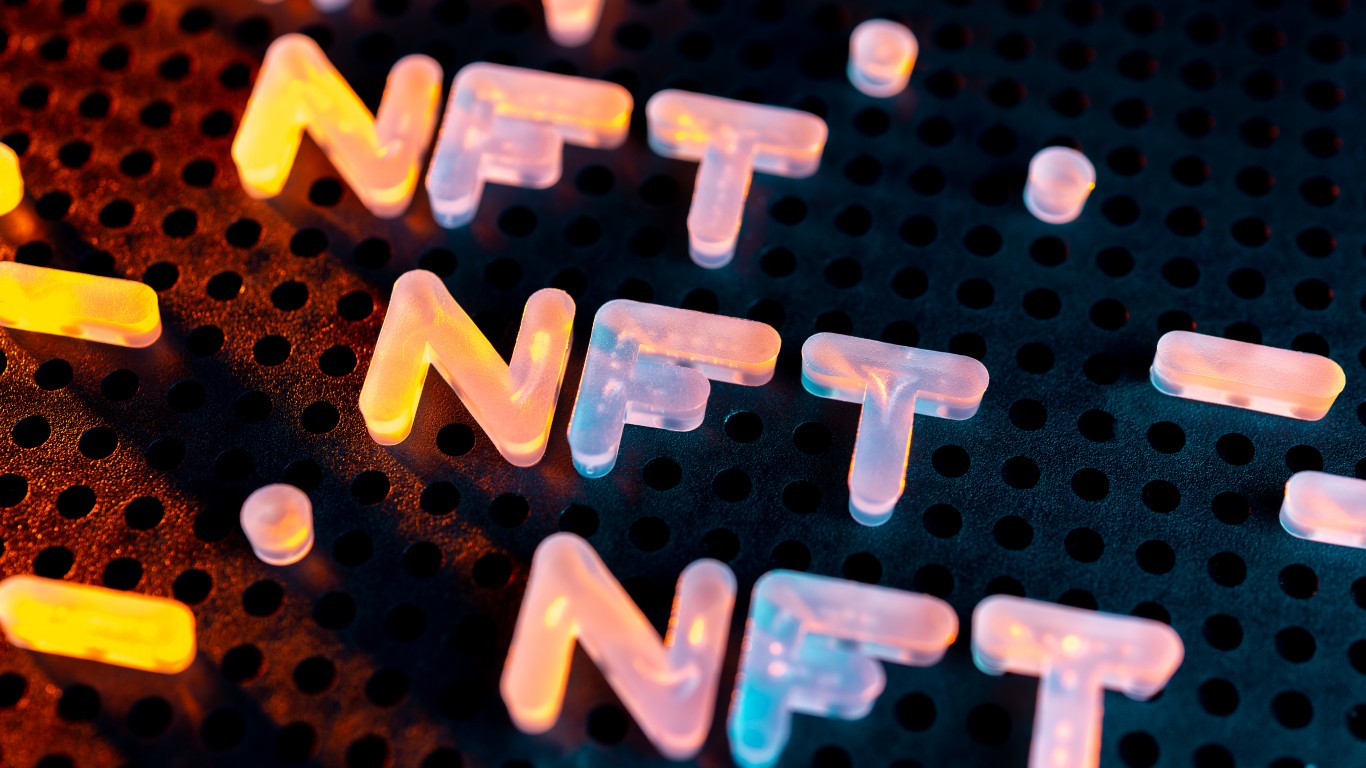Investing
Once Worth Billions, NFTs Now Crippled as Market Downturn Continues

Published:

In 2021, the world of non-fungible tokens (NFTs) was characterized by excitement, wild speculation, and overly-hyped prices. However, the market has experienced a significant downturn, plunging floor prices and falling trading volume since then.
Monthly trading volume for NFTs has plummeted by 81% between January 2022 and July 2023, while monthly NFT sales figures have dropped by 61% during the same period. Likewise, the floor prices of popular NFTs like Bored Ape Yacht Club and CryptoPunks have hit a two-year low.
Once considered the next big thing in the crypto world, NFTs have failed to recover following the 2022 crypto meltdown. Investors have seen the value of their blue-chip NFTs drop significantly, while several platforms have been forced to close down operations.
NFT marketplace Recur, supported by billionaire Steve Cohen and renowned for its Hello Kitty NFT partnership, has announced it’s winding down due to “unforeseen challenges and shifts in the business landscape.” Nifty’s, an NFT social media platform backed by Mark Cuban and Joe Lubin, has also decided to cease operations, citing unsuccessful investment opportunities.
Even platforms like Blur, a leading NFT marketplace, have witnessed a staggering 96% drop in sales volume measured in Ether between late June and early August. OpenSea, the second-largest NFT marketplace, has also seen a more than 90% drop in trading volume.
The fear of increased regulatory scrutiny adds to the growing concerns within the NFT community. The US Securities and Exchange Commission recently took its first enforcement action against Yuga Labs, alleging that the NFTs it offered were unregistered securities.
NFTs gained prominence in 2017 with the introduction of Dapper Labs’ CryptoKitties, a game featuring tradable digital cats. The phenomenon caused such a surge in popularity that it overwhelmed the Ethereum network.
The subsequent success of Bored Ape Yacht Club, an NFT collection of cartoonish monkeys, further bolstered the hype. The industry even attracted the attention of numerous celebrities like Madonna, Paris Hilton, and Justin Bieber, who jumped on the NFT craze with bold investments.
In 2022, the NFT market saw approximately $24.7 billion in trading volume across different platforms, almost matching the $25 billion recorded in 2021. Among the top-selling NFT projects was Ethereum’s Bored Ape Yacht Club, which achieved a nearly $1.6 billion trading volume.
Since its 2022 peak, the NFT market has experienced a complete reversal. Investor sentiment has turned sour, with collectors filing lawsuits against NFT creators and sellers due to the rapid decline in the value of their artwork. Traders are also diverting their attention to cryptocurrencies like Bitcoin, which has experienced a 60% rally this year.
The NFT market downturn has been particularly evident in profile picture (PFP) NFTs. Often displayed on social media platforms, these tokens have significantly decreased value, leading many collectors to sell their holdings. Only collections like CryptoPunks have managed to retain some level of stability.
Meanwhile, the decline in the NFT market is partly attributed to the emergence of trader-driven markets, according to a report from Bloomberg. The shift from a collector-driven market to a trader-driven market has focused on floor items, incentivized bids, lending, and inventory, eroding the original emphasis on rarity and intrinsic value.
It is worth noting that some players in the industry have been distancing away from the word NFTs. Instead, they have used alternative terms like “digital art” or “digital collectibles.” Sotheby’s, for example, now refers to NFTs as “generative art,” while Pudgy Penguins, an NFT project, refers to their products as “digital collectibles.”
While most of the NFT market experiences a drastic decline, there is still some resilience. Sotheby’s sold a piece from the Grails collection for around $6.2 million in June, while Christie’s is seeing demand for creations by Canadian artist Mad Dog Jones.
Likewise, Lufthansa, one of Europe’s largest airline groups, has recently launched Uptrip, a mobile app for its NFT loyalty program. The company’s passengers can use the app to scan their boarding passes and exchange them for NFT trading cards.
There has also been a spike in interest in NFTs tied to the Bitcoin blockchain. As reported, these digital tokens saw a massive spike in popularity in the second quarter of the year, increasing by a significant 2,834% compared to Q1.
This article originally appeared on The Tokenist
Are you ahead, or behind on retirement? For families with more than $500,000 saved for retirement, finding a financial advisor who puts your interest first can be the difference, and today it’s easier than ever. SmartAsset’s free tool matches you with up to three fiduciary financial advisors who serve your area in minutes. Each advisor has been carefully vetted and must act in your best interests. Start your search now.
If you’ve saved and built a substantial nest egg for you and your family, don’t delay; get started right here and help your retirement dreams become a retirement reality.
Thank you for reading! Have some feedback for us?
Contact the 24/7 Wall St. editorial team.